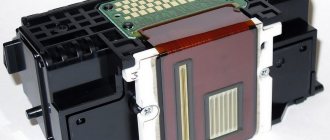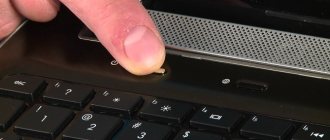Having found the constellation Ursa Major in the night sky, or by paying attention to the pattern of snow melting, an experienced traveler can easily determine the sides of the horizon. However, it is better for a novice tourist to abandon “amateur activities” and, postponing alternative methods of orienteering until better times, control the route using a compass.
It happens that, after glancing at the types of compasses presented, a beginner becomes confused and cannot choose the device for its intended purpose. But it’s stupid to acquire a gyroscopic device when going on a “quiet” hunt in a nearby forest or a one-day hike. In order not to regret a rash purchase, you need to study existing models and only then go shopping.
How to choose a compass
You can avoid trouble by having with you an ordinary compass, which acts as a guide and accurately determines north and south. However, this does not mean at all that the same device is suitable for wandering along forest paths and for a multi-day expedition. But more on that later. First, check out the criteria for the right compass:
- Durable, or better yet, shock-resistant housing made of metal or plastic.
- Protected from moisture.
- A principle accessible to everyone for determining the directions of the sides of the horizon: North, South, East, West.
- Dial with clearly visible divisions.
- The presence of large letters indicating directions.
- Compact and mobile.
- The electronic model must have a powerful battery. But don't waste time looking for a battery that lasts forever. As a rule, a fully charged battery runs out within three days.
What types of compasses are there?
Many modern devices operate on the principle of the oldest model, invented at the turn of the 12th – 13th centuries. Every year the compass is improved with structural changes. As a result, many devices appeared with one or another bias (geographical, children's, military, sports, etc.).
For a long time, magnetic or electronic types of compasses have remained undisputed favorites.
Army
Military compasses are most often placed in a durable case, protected from moisture. Additional devices such as a visor, lens, and engineering ruler help you orient yourself more accurately, and phosphorescent paint is visible in the dark.
AceCamp "Military Compass"
pros
- shockproof housing
- visor
- magnifying glass
- ruler
- can be used in the dark
Minuses
- opaque cover
- not suitable for mountains
From 999 ₽
The first place was taken by a 100-gram liquid compass in a durable metal case, which can be hung by a special bracket on clothing or a backpack. Suitable for orienteering during the day or at night, but only on flat terrain. The protective cover has an aiming thread, light accumulating marks and a ruler.
Kromatech Green 57149b016
pros
- adjustable visor
- formula table on the back of the case
- viewing window in the housing
- water protection
- tripod mount
Minuses
- plastic housing
- no lens
From 582 ₽
In second place is also the liquid model with a bubble level. Despite its compact size of 6x8 cm, it weighs impressively, as much as 183 g, and this is with a plastic case. The lid is transparent: convenient to use while hiking. The arrow is positioned quickly, and the sight can be controlled without opening the case.
Magnetic
A magnetic compass is simple and easy to use. The advantage of magnetic models is independence. Simply put, their functionality is independent of the battery charge level. By interacting directly with the earth's magnetic field, the built-in magnetic elements are activated.
In a good compass, the capsule with the dial located inside is filled with a special solution that is resistant to temperature fluctuations. An air bubble in the liquid serves as an indicator of the orientation level. You should remember the factors that affect the accuracy of readings from a magnetic device:
- the presence of metal objects and structures;
- magnetic storms;
- an area with a high content of metal ore.
In order not to find yourself far from civilization with a demagnetized device, you need to conduct “reconnaissance.” Make sure that there are no metallic “obstacles” along the route. It is also important to take into account the phase of sun activity at the time of orientation. Now let's look at the main types of magnetic compasses.
Mechanical
The model is in particular demand among tourists. A magnetized metal needle with a red tip placed on a needle “looks” in the direction of the strongest magnetic field – north.
Using a mechanical device and a topographic map, you can determine the location of landmarks as accurately as possible.
For the military
It differs from the mechanical one by the presence of a magnifying lens, a ruler and a sighting device (front and rear sights), designed for better viewing of landmarks.
Tactical models are designed for precise orientation in field conditions. Main characteristics: metal body, high precision.
Geological
It is called mountain and is used to determine the azimuth of a route or the azimuth of a landmark. A specific device in which the dial is calibrated counterclockwise. The compass is equipped with a clinometer and a half-limb, allowing you to determine the angles of incidence of rock layers.
Gyroscopic
A device with a gyroscope at the base is used in aviation and navigation. Perhaps this is the most accurate compass, showing the geographic rather than the magnetic pole.
Gyroscope
The indicators of the gyroscopic device do not go astray even during swinging. Magnetic types of ship compasses are in demand no less than ARC in aviation.
Astronomical
Helps determine cardinal directions using stars or the moon. Even the accuracy of the readings does not put the compass in the selling group. This is due to the uselessness of the astronomical compass during the daytime.
For orienteering
The athlete must master the magnetic compass and learn to “read” a topographic map. Choosing a compass for orienteering is a painstaking process. Ideally, the device should meet the following requirements:
- the magnetic needle is installed in the shortest possible time;
- during jumping, running, cycling, the arrow “sits” like a glove;
- the device fits in your hand and does not slip out;
- compactness and light weight.
Selecting a compass. How to choose a compass for hunting and sports. Comparison of different models
To do this, first of all, we will consider various tourist compasses that can be used for orientation on the ground, or rather on the ground. Navigation for yachts and other water transport has its own specifics, and we will not write about this topic here.
You can also navigate on land in different ways: on your own two feet (on foot, running, skiing...), by bicycle, by car and by air (balloon, hang glider, paraglider...). Each of the listed types has its own specifics. Let's look at everything one by one...
When orienting in the air, most people prefer to use electronic navigators. This is quite justified, since for navigation, in addition to a compass, you also need a map. In addition, you need to have information about the current flight altitude and pressure. It is much simpler and easier to have one device with you that has all these functions than several.
When navigating a car, it is also better to give preference to an electronic device rather than a magnetic compass. There are too many metal parts in the car and the magnetic compass readings are unlikely to be accurate. In this type of orientation there are, to a serious extent, no restrictions on the weight of the cargo being transported, so the main positive qualities of a magnetic compass - lightness, compactness and energy independence - are of no use here.
When traveling, especially long ones, on a bicycle, it’s worth considering whether to take with you a GPS with extra batteries for orientation, or a regular magnetic compass with a set of paper topographic maps. In general, cycling tourism, as a rule, is tied to roads, and, consequently, to populated areas. Cyclists count the weight of a backpack down to a gram only on very difficult routes. Nowadays there is a choice of solar chargers. Therefore, a GPS navigator is quite acceptable. Moreover, if the area through which you are planning to travel on an “iron horse” does not have a sufficiently detailed map, or you do not have sufficient skills in working with a compass. Once they gain experience, people still abandon GPS and switch to orienteering with a classic compass. This eliminates unnecessary problems with batteries, and linking the cycling route to roads allows an experienced tourist to use the compass only in extreme cases. One of the disadvantages of using a magnetic compass is that iron parts of the bicycle can interfere with its operation. Therefore, it is better not to place the compass on the steering wheel and, when directly using it, move it to the side for orientation.
When walking orienteering (on a hike), preference is given to a magnetic compass, due to its above-mentioned advantages. For simple, non-multi-day hikes, you can afford to choose a GPS navigator, especially if you have no orienteering experience. But, if you are planning to seriously engage in tourism, you need classical orienteering skills. Each participant in the hike should imagine a map of the area, the distribution of cardinal directions, and options for accessing crowded places in case he gets separated from the group. A compass, in fact, is necessary for accurately identifying objects (passes, peaks, lakes). As practice shows, the ability to navigate using maps and a magnetic compass gives a much better idea of the terrain than GPS orientation.
And a separate type of orienteering is orienteering. Its subtypes are bicycle orienteering, ski orienteering, and classic running orienteering. These species can also be divided into subspecies, but this is not important. This sport requires the ability to use a topographic map and a magnetic compass. However, here special requirements are imposed on the device in question - high speed of installation of the magnetic needle and its stability during running.
In addition, its ease of use and weight. Lately, adventure races often include stages with GPS navigation, but the good old compass never goes beyond the boundaries of the stages.
Nowadays, buying a good compass is not so easy. Not every tourist store will have a large assortment. In my opinion, if you are choosing a compass, it is better to take a model that can be suitable for several uses. For example, for orienteering in the mountains and for running orienteering. Or for cross-country orienteering and a walk in the forest to pick mushrooms. It depends on your range of interests.
Before considering travel compasses from various manufacturers, it is worth mentioning that the housing of the magnetic assistant also varies.
Tablet compass "Expedition". Product from a well-known brand. Dimensions 21ms x 10cm x 1cm, weight 80g. Cost – 260 rub. The compass scale division is 2 degrees, a ruler on a tablet, a magnifying glass, scale rulers, a deviation scale, a rotating capsule. In general, a fairly rich set for relatively little money. The model is not bad for hiking and orienteering. It is not suitable for sports due to the poor stability of the arrow when running and its slow installation. However, as practice shows, the quality of the compass leaves much to be desired. It will last you no more than one active season. The plastic is fragile, and the rotating capsule soon begins to act up. This model looks more like a toy than a serious compass for sports.
Expedition compass. Dimensions 7cm x 5.5cm x 2.5cm. Made of plastic. Developed in Germany. Not a bad, beautiful model. Equipped with a sight and a magnifying glass, it is light in weight. The presence of a cover protects the glass from impact. Suitable for mountain, bicycle and hiking trips, for trips to the forest for mushrooms, where when orienting you do not need to constantly move in the exact direction, but just need to orient the map.
Army compass (Happy outdoor). Dimensions 6x8 cm, weight 100 g. Price about 300 rubles. Quite heavy, but practical compass. Equipped with a sight, magnifying glass and ruler. Has a shockproof body. Not the best for tourism. Currently, there are quite strong plastics that can withstand the impact that is acceptable on a hike or in competitions and have less weight compared to metal.
Scottish compass Dalvey. Made of stainless steel. It has a diameter of 48 mm and a thickness of 15 mm. Price – about 2000 rubles. Miniature, beautiful and expensive compass. Suitable only as a gift or interior detail. Taking such a compass to competitions or on a hike is difficult and pathetic.
Compasses Moskompass. There are different configurations in different cases. Probably the only thing this company does not have is non-sports gift options for the product. Today in Russia, Moscompass compasses are the best choice for sports and tourism.
November 1, 2011 at 00:42
Electronic compasses
Modern compasses, operating on the basis of magnetized sensors, are distinguished by high accuracy and a variety of functions. In addition to accurately determining coordinates (using satellite systems), it can “remember” data on the length of the route and the path it takes.
It is especially convenient to save the selected point on the terrain where, say, a camp is set up, and continue on your way. Both outdoor enthusiasts and professionals: military personnel, representatives of law enforcement agencies remain permanent consumers of electronic compasses.
Attention! When choosing an electronic device, you should keep in mind that the battery is discharged within 3 days. Therefore, when going on a long walking expedition, it is better to acquire a magnetic compass.
Now let's look at the main types of electronic compasses.
Radio compass (ARC)
An automatic on-board radio direction finder, used for navigation of aircraft during flight. Indicates the direction of an object emitting radio waves. Having tuned to the carrier frequency, the device automatically displays the necessary data. Regardless of weather conditions and time of day, it copes with the following tasks:
- ensures the correct course to follow;
- determines where the radio station is located;
- performs the functions of a backup radio receiver.
Travel electronic compass
The best hiking option, showing accurate time and performing a lot of additional tasks. But only for a short tourist walk. It does not have a magnetized needle, which makes it different from its magnetic “colleague”. Determines the sides of the horizon using electronic circuits.
GPS and Glonass
Satellites transmit signals that are picked up by an electronic system. Navigators recognize information and accurately determine the required coordinates.
Unlike magnetic ones, they can estimate real coordinates in conditions of poor visibility and without noticeable landmarks. When avoiding an obstacle with GPS device, you just need to adjust it along the changed route line and the desired direction will be set.
Can a GPS receiver replace a compass?
GPS receiver has high navigation characteristics and often has a built-in electronic device. However, despite all its functionality, the navigator becomes useless if the battery is dead.
The conclusion suggests itself: when going on an expedition or hike, it is better to take a trouble-free magnetic compass with you. But you can also grab a set of backup batteries. However, during a long walking expedition, this measure will not solve the problem.
Types of compasses
These days there are several types of compass. Each of them was designed for use in certain conditions:
- Magnetic or the simplest device.
- Electromagnetic device for orientation, used in cars and aircraft.
- Liquid device.
- Electronic or modern.
- Gyroscopic.
- Radio compass.
Magnetic compass
The simplest and oldest device for determining horizontal directions is a magnetic compass. He is also called Adrianov in honor of the Russian scientist and engineer-inventor. This device consists of:
- Housings made of metal or plastic.
- Dial with degree divisions.
- A magnetized needle that interacts with the Earth's magnetic field.
This pointer compass is considered the most common and frequently used device for tourists, travelers and geologists. However, it is worth remembering that the device near accumulations of metals, power lines, magnetic poles of the planet and in areas of magnetic anomalies may point in the wrong direction.
Electromagnetic compass
A more advanced direction-indicating device used in airplanes, cars, and ships is the electromagnetic compass. Its action is based on the phenomenon of magnetic induction:
- The frames with windings in it act as a rotor, and the magnetic field of the planet acts as a stator.
- The course of movement is indicated by the ratio of voltages induced in the windings in a natural magnetic field.
The advantages of the device include the absence of errors near ferromagnetic materials and electrical devices. The first such devices required high speed to operate, which is why they were initially used in aviation. It is believed to have been first used by Charles Lindbergh on his famous flight across the Atlantic.
Electronic compass
It is impossible to understand what a simple compass is without mentioning more modern devices for orienteering, which include the electronic variety. The device is a kind of analogue of the familiar navigators:
- This is a battery-powered device that receives specialized signals from the satellite.
- The main advantage of an electronic compass is considered to be its high accuracy of operation, since the device takes into account magnetic declination and other features that prevent other types from working accurately.
- The main disadvantage of the device is that it is tied to the battery charge, so it is not used on long hikes without the possibility of recharging.
Liquid compass
The popular Andrianov magnetic compass device has a significant drawback. In it, the arrow in the body is located in the air. Because of this, it takes a long time to stabilize and is poorly used with constant movement. Therefore, the tourist needs to stop and wait to determine the exact direction of travel.
This problem was solved in 1936 by Tuomas Vohlonen. He placed the pointer in a special non-freezing liquid, which absorbs the vibrations of the pointer, increasing the accuracy and speed of the reading. At high altitudes or at extremely low temperatures, bubbles may form in the liquid, which do not in any way affect the accuracy of the readings and disappear when atmospheric parameters are normalized.
Radio compass
Another type of orientation device is an automatic radio compass, which is also sometimes called an automatic on-board radio direction finder. This device:
- It is tuned to the carrier frequency and indicates not the cardinal directions, but the object emitting radio waves.
- It works regardless of weather conditions and time of day.
- It is used mainly in aviation for orientation and spatial scanning, determining the location of a radio transmitter and serves as a backup radio receiver.
- With the advent of more modern GPS devices, it is gradually losing its importance.
Gyro-compass
Another most accurate direction indicator is a gyroscopic device. It is mainly used on ships and rocketry; in airplanes, the device indicates more accurately than others the geographic rather than the magnetic pole of the planet, and it works even with strong rocking of the ship or aircraft. It is based on the principle of the properties of the gyroscope and the daily rotation of the Earth based on the ideas of the French scientist Foucault:
- It has a rotating wheel (rotor) built into the gimbal.
- To indicate the direction, the rotor is held in a horizontal position relative to the horizon by special weights.
- The force of gravity creates a torque under the influence of the rotation of the planet, and the axis turns strictly to the geographic north.
Electromagnetic
A device with straps for wearing on the hand is difficult to classify as a frequently purchased device. The device is made as a magnetic device, but with one significant difference: the measurement of the position of the arrow is carried out by electronic components. Then, the converted data appears on the screen.
The electromagnetic model is good for mushroom picking, fishing or hunting. It is enough to put the device on your hand and monitor the screen indicators.
Attention! Since the functionality of the device depends on the battery charge, it is not suitable for long hikes.
Liquid
The configuration is the same as the classic magnetic version. This is a sealed, sealed flask with an arrow, filled with a non-freezing solution. Thanks to the anti-freeze resistance, the needle calms down in just a couple of seconds.
The indicator practically does not respond to vibration and other influences. There is no need to buy a liquid device for a walk along park alleys. Its main purpose is orienteering competitions. Easy to use, precise and fast, it saves every second. But this is the most valuable thing on the path to victory.
Varieties of executions
When wondering which of the proposed compasses is better, don’t even expect to get an instant answer. And there is no need to hastily accuse the seller of incompetence. He can't read minds. First, decide under what conditions the device will be used and set a price barrier.
Attention! Don't buy a device based solely on its design. It is important to pay attention to its design features.
For example, tiny, weightless children's compasses are not highly accurate. It is unlikely that such a model will be suitable for conquering a new route far from civilization.
On the contrary, a multifunctional device designed to solve the most important specific tasks will turn out to be useless while walking along park alleys.
Orientation arrow
Before setting out on a route, experienced travelers calculate the direction from the map and determine the angle of deviation of the azimuth from the magnetic meridian. The data is stored using an additional arrow. Throughout the journey, she “looks” in the direction of the point of arrival. With the guidance arrow, planning your route becomes child's play.
Optical lenses
Magnifying glasses mounted on a substrate are an indispensable companion to tablet devices. With their help, it is much easier to see small symbols indicated on the topographic map.
Fluorescent markings
The luminous tip of the arrow and the symbols on the scale significantly simplify the process of orientation in poor visibility conditions: at night, in fog, in a downpour, etc. In hiking conditions, especially with heavy precipitation, this is a very valuable property.
Clinometer
A device provided for engineering instruments that allows you to determine the angle of inclination of a slope and design upcoming operations: construction, earthworks (optionally, the construction of dam-type storage facilities). During the conquest of mountain peaks, it will allow you to assess the degree of danger of an avalanche.
Sighting mirror
When going into the forest, it is better to have with you a device with a small folding mirror with a through hole. Through the device installed in the initial position, it is especially convenient to view the direction of travel and a landmark located in a straight line. This significantly speeds up the movement of the tourist group. In addition, the mirror is suitable for sending an SOS signal if you suddenly need help from rescuers.
Global arrow
The function will be appreciated by explorers of the Southern Hemisphere. A needle designed to rotate freely in North America may fail in other parts of the world. This is due to deviations in the earth's magnetic fields. A compass equipped with a global needle is equally functional everywhere.
Strap
Essentially, a piece of cord that allows you to wear the device on your belt, backpack or wrist. Simplifies the orientation process.
Magnetic compass
In a magnetic compass, the main element - the magnetic needle - is located along the lines of force of the Earth's magnetic field - a natural giant magnet - and points to its poles.
The needle of such a compass is aligned in the direction of the Earth's magnetic lines.
Due to the fact that the magnetic poles are located near the geographic poles, over most of the surface of the globe, a magnetic compass can be used to find the approximate direction of true north or south, and from this determine all other cardinal directions.
What to look for when choosing?
It is not enough to know what types of compasses there are. The main thing is to be able to identify a truly suitable device. Tips from experienced travelers will help you figure it out:
- A classic device with a ruler and degree division is suitable for hiking. Using a degree dial and a ruler, experienced tourists make degree and azimuth calculations.
- GPS navigator - an option for a cyclist. Attention! It requires regular recharging, which means that when going on a bike tour you need to take a backup, classic compass with you.
Electronic navigators are suitable for aviators. Multifunctional devices will allow you to monitor altitude and pressure indicators.
How to choose a convenient model
How to choose a compass that lasts forever? Similar questions are asked by people who have recently embarked on the path of tourism. Experienced travelers do not rely on "maybe". Before setting out on a route, they think through all the actions that may arise in force majeure situations.
For example, a car moving through snowy expanses broke down, and the battery of an electronic device was hopelessly discharged. If you find yourself in such a situation and have no experience in alternative methods of orientation, you can get completely and irrevocably lost.
But the trouble will seem trivial if you have a spare emergency kit at hand, consisting of detailed maps of the area and a magnetic compass that does not depend on energy sources.
Cars and motorcycles
To make a motorcycle rally or a car trip to new places, you can pay attention to an electronic device. This ensures the most accurate data possible. At the same time, the compass will not react to metal parts of the vehicle. This means that its functionality will not decrease.
Some people will be confused by the fact that the device requires regular charging. This is a problem when traveling on foot. But, using the energy of a running car, you can charge the device whenever you want. This means that the fears are unfounded.
Cyclists
As a rule, cyclists ride not far from “civilization.” The best option would be a liquid type device. By hooking it on your wrist or hanging it on a neck cord, you can control your location without being distracted from the movement. When planning a bike ride to a neighboring city, it is better to take a backup electronic compass.
Hiking
The simplest magnetic compass will become a worthy companion while hiking in a nearby park. For walks with your child, purchase a children's wrist model and teach the younger generation navigation skills in the form of a game.
Sport
Orienteering requires special equipment. The best option is a liquid device. High-precision readings, speed, convenience are its main characteristics.
Note! Organizers of orienteering competitions prohibit the use of electronic devices.
Recommendations for proper use
Like other navigation devices, the compass may be defective. Therefore, without leaving the counter, you need to make sure that the device is working properly. First, rotate and shake the body thoroughly. Then pay attention to the speed at which the needle returns. If the search for North and South takes too long, the device is no longer suitable.
It is not enough to know what types of compasses there are. It is much more important to choose the right model and master the science of orienteering.
Before you go on a hike, you need to study the attached instructions from cover to cover. Further actions:
- calibrate;
- practice determining your coordinates on familiar terrain;
- if we are talking about an electronic model, take care of spare batteries.
When considering an electronic device, you need to pay attention to the type of screen. The touch display absorbs more energy, which is important to take into account when planning a route and determining the duration of the trip.
Important information! When a magnetic model is used for a long time, some of its parts become deformed. The possibility of erroneous readings can be eliminated by regularly checking the operation of the device.
Working with a magnetic compass
A magnetic compass helps determine the direction to magnetic north and south, as well as the direction to a selected object relative to the direction to north - azimuth.
Since a magnetic compass responds to any magnetic field, in most cases its needle points not towards the magnetic poles of the Earth, which we talked about here, but away from them.
This is primarily due to magnetic deviations, which are caused by nearby magnetized objects.
The only way to reduce magnetic deviations in a travel compass is to stay far enough away from magnetic objects (such as a knife, cell phone, or other compass), objects (such as a car, airplane, or ship), and sources of electrical current (such as power lines). Although on sea vessels, magnetic deviations associated with the parts of the ship itself are eliminated using special systems equipped with magnets.
There are also areas in which the Earth's magnetic field lines deviate greatly from similar lines in neighboring areas. Such areas are called magnetic anomalies. The compass needle also “lies” in these areas.
It is worth noting that near the geographic poles of the Earth, both in the northern and southern hemispheres, in our time the compass can give large errors, up to 180°, that is, the largest error hypothetically possible.
It was not for nothing that I said that it is in our time. The fact is that the location of the magnetic pole (both south and north) is not constant. Firstly, at the moment the magnetic poles do not coincide with the locations of the geographical poles, and secondly, the location of the magnetic poles changes over time, and moves unpredictably, changing both the direction of movement and the speed. Therefore, we cannot exclude the possibility that sooner or later at some point in time it will coincide with the position of one of the Earth’s geographic poles.
Throughout the history of the Earth, the magnetic poles have repeatedly changed their location diametrically, that is, near the north geographic pole at different times there was both a north magnetic pole and a south magnetic pole.
In addition, due to the proximity of the geographic poles to the magnetic poles, difficulties can arise in measurements using a magnetic compass for the same reason that they arise at the magnetic poles themselves.
At points on the earth's surface corresponding to the earth's magnetic poles, a magnetic compass will not work, since the earth's magnetic field lines in these areas are directed strictly vertically. More precisely, it will work, but only if it is turned on its side - the magnetic needle in this case will take a strictly vertical position, that is, exactly along the magnetic lines of the Earth.
Devices worthy of attention
Modern compasses do most of the work themselves. The traveler just has to follow the instructions exactly. Among the many existing models, the leaders are:
CAMMENGA MODEL 27CS OLIVE DRAB LENSATIC
Ultra-precise and reliable device. Withstands any temperature and climatic anomalies. “Unkillable” titanium case, coated with phosphor paint.
At night, just shine it on it for 30 seconds and use it.
POCKET TRANSIT 0-З60 DEGREE
“Clad” in a cast aluminum housing, the device is resistant to mechanical stress and temperature fluctuations. The silicon lock reliably protects against moisture.
This allows you to use the device when crossing water bodies. The needle moves smoothly and is quickly installed on the magnetic server.











